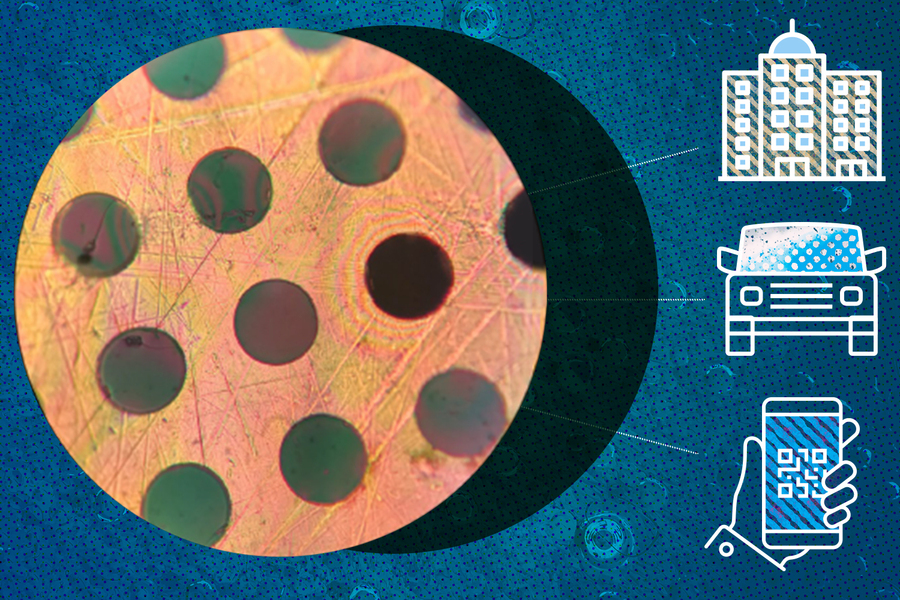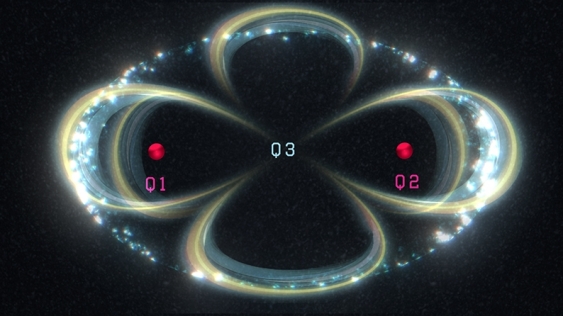2022-02-08 オーストラリア連邦・ロイヤルメルボルン工科大学(RMIT)

・ RMIT が、ハスの葉のように水分や泥を跳ね返して自己洗浄する生分解性バイオプラスチックを開発。
・ プラスチック廃棄物への対処は環境保全における重要な課題の一つだが、代替となるプラスチックの開発と普及には、生態系への優しさと費用対効果の双方への配慮が必要。
・ 新バイオプラスチックは、スターチとセルロースのナノ粒子を原料とした材料表面にハスの葉の表面構造を模倣した加工を施し、シリコンベースの有機ポリマー(PDMS)の保護層でコーティングしたもの。
・ ハスの葉の表面構造を取り入れることで、多用途の天然ポリマーであるスターチベースの材料の脆さと水分による影響の問題を解決。安価で入手し易い材料の利用により製造コストを低減し、ハスの葉の撥水構造のような強度を持ち合わせながら廃棄後は土壌で迅速に自然分解する。
・ 製造プロセスには熱や複雑な機器が不要で、ロール・ツー・ロールによる大規模生産ラインへのアップスケールが可能。生ゴミと同時に廃棄できて容器内で堆肥化する、生鮮食品やテイクアウト用のパッケージングの提供が最終的な目標。リサイクル中の食品による汚染も回避する。
・ 撥水効果の最も高い表面を持つハスの葉は、汚れの付くことがほぼ不可能なことで知られているが、これはワックス層と微細な乳頭状突起から成る葉の表面構造によるもの。水は葉の表面で丸まった水滴となり、泥等を絡め取りながら滑り落ちる。
・ 同材料は、水分や泥を効果的にはじくだけでなく、ヤスリで傷を付けたり、熱、酸やエタノールに晒しても自己洗浄機能を保持する。
・ 現在はバイオプラスチック企業との協力で同材料の開発を進めているが、商用アプリケーション開発でのパートナーとの協働も募集している。
URL: https://www.rmit.edu.au/news/all-news/2022/feb/self-cleaning-bioplastic
<NEDO海外技術情報より>
(関連情報)
ACS Applied Materials & Interfaces 掲載論文(アブストラクトのみ:全文は有料)
Robust and Eco-Friendly Superhydrophobic Starch Nanohybrid Materials with Engineered Lotus Leaf
Mimetic Multiscale Hierarchical Structures
URL: https://pubs.acs.org/doi/10.1021/acsami.1c09959
(関連情報)
Science of the Total Environment 掲載論文(アブストラクトのみ:全文は有料)
Biodegradation of novel bioplastics made of starch, polyhydroxyurethanes and cellulose nanocrystals
in soil environment
URL: https://www.sciencedirect.com/science/article/abs/pii/S0048969721077627?via%3Dihub
Abstract
The use of superhydrophobic surfaces in a broad range of applications is receiving a great deal of attention due to their numerous functionalities. However, fabricating these surfaces using low-cost raw materials through green and fluorine-free routes has been a bottleneck in their industrial deployment. This work presents a facile and environmentally friendly strategy to prepare mechanically robust superhydrophobic surfaces with engineered lotus leaf mimetic multiscale hierarchical structures via a hybrid route combining soft imprinting and spin-coating. Direct soft-imprinting lithography onto starch/polyhydroxyurethane/cellulose nanocrystal (SPC) films formed micro-scaled features resembling the pillar architecture of lotus leaf. Spin-coating was then used to assemble a thin layer of low-surface-energy poly(dimethylsiloxane) (PDMS) over these microstructures. Silica nanoparticles (SNPs) were grafted with vinyltriethoxysilane (VTES) to form functional silica nanoparticles (V-SNPs) and subsequently used for the fabrication of superhydrophobic coatings. A further modification of PDMS@SPC film with V-SNPs enabled the interlocking of V-SNPs microparticles within the cross-linked PDMS network. The simultaneous introduction of hierarchical microscale surface topography, the low surface tension of the PDMS layer, and the nanoscale roughness induced by V-SNPs contributed to the fabrication of a superhydrophobic interface with a water contact angle (WCA) of ∼150° and a sliding angle (SA) of <10°. The PDMS/V-SNP@SPC films showed an ∼52% reduction in water vapor transmission rate compared to that of uncoated films. These results indicated that the coating served as an excellent moisture barrier and imparted good hydrophobicity to the film substrate. The coated film surfaces were able to withstand extensive knife scratches, finger-rubbing, jet-water impact, a sandpaper-abrasion test for 20 cycles, and a tape-peeling test for ∼10 repetitions without losing superhydrophobicity, suggesting superior mechanical durability. Self-cleaning behavior was also demonstrated when the surfaces were cleared of artificial dust and various food liquids. The green and innovative approach presented in the current study can potentially serve as an attractive new tool for the development of robust superhydrophobic surfaces without adverse environmental consequences.



